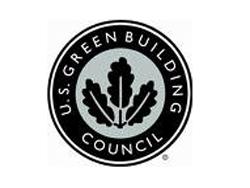USGBC Launches Green Homes Rating System
LEED stands for Leadership in Energy and Environmental Design. The system is a national benchmark for design construction, and operation of high performance green buildings. Projects include commercial, community, and educational buildings.
The new rating system will incorporate results from the LEED for Homes pilot program that began in 2005, and will be expanding into more areas of the country.
LEED for Homes certification is a way to show that a new home meets verifiable green building standards. Having a home certified may also allow consumers to take advantage of a growing number of credits and rebates.
The LEED rating system offers four certification levels for new construction: Certified, Silver, Gold, and the highest level, Platinum. These levels correspond to the number of points earned in eight categories: Innovation and design, location and linkages to the larger community, sustainable sites, water conservation, energy efficiency, materials and resources, indoor air quality, and consumer education.
According to the USGBC, a green home uses less energy, water, and natural resources, reduces waste, and is healthier and more comfortable for the occupants. Financially, the group says that a LEED-certified home can cost less to operate with lower energy and water bills. It also claims that the net cost of owning a certified home is expected to be comparable to that of owning a conventional one.
If energy-savings pan out, the system also has the potential to fight air pollution and global warming if it is adopted on a large scale. Currently, home energy use accounts for about 21% of nationwide energy consumption and greenhouse gas emissions, according to the Department of Energy.
